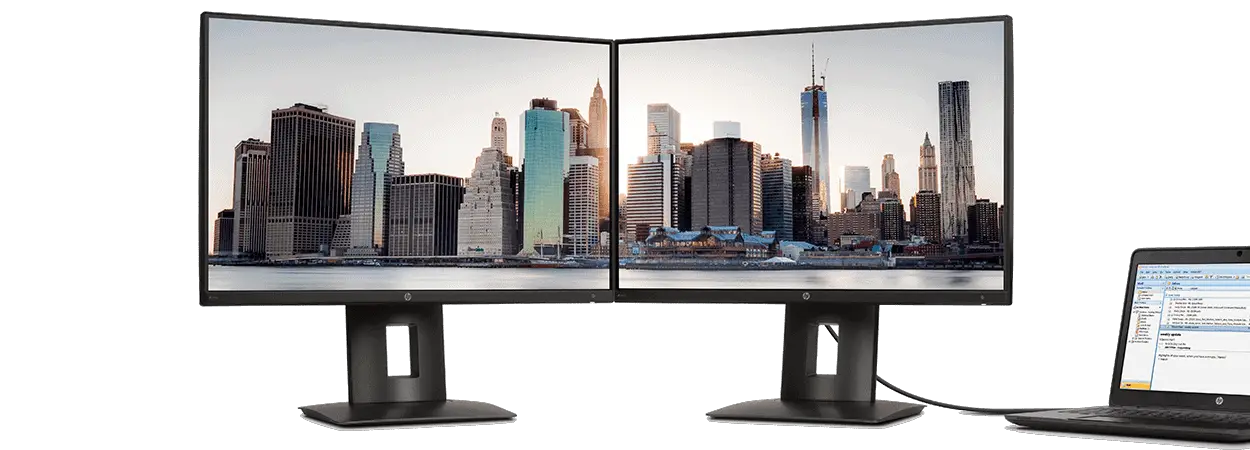Having two monitors connected to one computer might seem a luxury for many professionals. However, dual monitors can be pretty beneficial for a wide range of tasks. Using two monitors may be an ideal setup for certain types of productivity-based functions that require multiple windows open side by side at the same time. For example, suppose you’re a programmer or graphic designer who must compare work between different programs or a writer who needs to refer to documents while creating content. In that case, the extra screen space can be invaluable.
Learn How to Change Mouse Direction on Dual Monitors in our article.

Are Dual Monitors Worth It?
Dual monitors are valuable because they increase viewing area, improve productivity, reduce eye strain, and have cost-saving potential. For example, dual monitors can save you money on hardware upgrades because you can work with multiple documents simultaneously.
Let us analyze each advantage:
- Increased Viewing Area—The most apparent advantage of having two monitors is that they double your viewing area. That means no more squinting at a tiny display and shifting between windows—you can have all your programs open and viewable at once without needing to resize or move them around constantly. This is especially true with larger displays, as they make multitasking easier and more efficient than on a single monitor setup.
- Improved Productivity – Not only does increased viewing area help enhance productivity in general, but other features like multitaskmmultitaskingand split-screen views also help make multitaskimultitaskingightforward than ever before. Furthermore, having two separate screens allows you to break down complex tasks into smaller steps, which can prevent cognitive overload and help you focus on one task at a time without distractions from other programs.
- Reduced Eye Strain—Working on two large displays means that text and images are usually more significant than they appear on one monitor, making them easier to read without straining your eyes. In addition, having two separate displays instead of cramming everything onto a tiny screen may also reduce headaches caused by eyestrain caused by constantly shifting your gaze back and forth between windows or applications.
- Cost Savings Potential –Dual monitors come with an upfront cost compared to just one display, but they can save money in the long run if used frequently. For instance, if you’re working with multiple large files at once, such as images or videos that require lots of processing power and memory, or you’re editing various documents simultaneously, then the cost savings could add up over time, as buying additional RAM or upgrading hardware often costs much more than simply doubling up on monitors instead.
- Overall Appearance—Having dual monitors also looks pretty impressive from an aesthetic standpoint. Investing in two displays rather than one could be another benefit if you like keeping your workspace neat. With newer models regularly featuring sleek designs and thinner frames, there’s no shortage of great style options for anyone wanting an attractive-looking office setup!
All in all, investing in dual monitors may be worth it depending on how often you use multiple programs at once throughout the day as well as what type of tasks these involve since not everyone will get the same amount of benefit from this kind of setup due to their individual preferences and workflow habits. However, based on who we’ve seen above, it appears clear that there are numerous advantages associated with using two screens rather than just one, so if you find yourself needing more space while working or just wanting an improved work experience overall, then investing in another monitor may very well be worth your while!
- Facebook Ads to Get Followers! - December 27, 2024
- ClickUp vs. Slack - December 20, 2024
- Mastering E-Commerce Analytics: A Blueprint for Success





